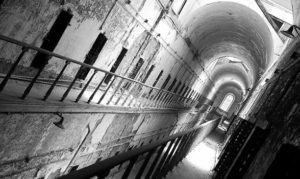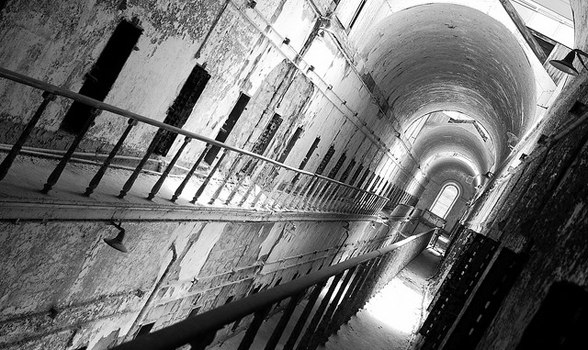
Before Occupy Wall Street, there were prison hunger strikes in Georgia and California. The 40th anniversary of the Attica prison uprisings came and went with some fanfare and much hand-wringing. The execution of Troy Davis stirred up a groundswell of U.S. liberal and left, and even international activism against the death penalty.
Although prisons have been on our radar, much of the public debate about them has centered on questions of harm reduction and cost reduction, as well as concerns about the status of “innocent until proven guilty” in our criminal justice system. However, as Critical Resistance co-founder Ruth Wilson Gilmore has pointed out, we need to move beyond a discussion of prison reform to talk seriously about the possibilities of prison abolition. (Critical Resistance is a grassroots organization that seeks to “build an international movement to end the Prison Industrial Complex by challenging the belief that caging and controlling people makes us safe.”)
For most people, the very phrase “prison abolition” sounds like a scary prospect – a recipe for anarchy, instability, and violence. But the prison abolition movement is much more focused on trying to envision new ways, other than mass incarceration, to make our communities safer, more sustainable, healthier, and more successful for all.
Let me demystify a few points. Prison abolitionists argue that the U.S. prison system is actually a “prison industrial complex” based on faulty premises about public safety and driven by profit motives. Much like what President Eisenhower called the “military industrial complex” or the “conjunction of an immense military establishment and a large arms industry,” the prison industrial complex (PIC) is made up of a set of mutually beneficial relationships between public and private entities that have a shared interest in expanding the surveillance, policing, and imprisonment of certain kinds of people.
The PIC came together as an imagined solution to a complex set of social, economic, and political “problems” in the late twentieth century – in other words, what to do with the masses of poor and underemployed people (especially people of color). Indeed, it is no accident that the expansion of policing and prisons began at the very same moment that the United States began to deindustrialize, the enactment of civil rights laws made various forms of racial discrimination illegal, the government began to cut back social programs, and the mainstream media became saturated with fearsome tales of (black male) criminals run amok.
